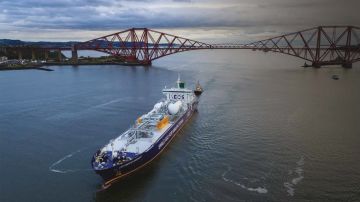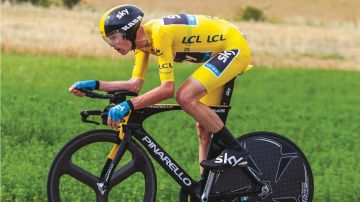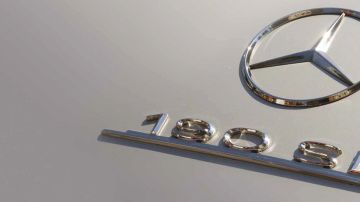The world of cycling has moved on a pace since Italian-born Maurice Garin won the first Tour de France in 1903, as INCH discovered during its journey into the past, the present and the future
IT is regarded as one of the most brutally challenging cycle races in the world. But while the riders’ determination to win the Tour de France may not have changed over the past 113 years, the technology certainly has.
Italian-born Maurice Garin won the first race on a red, white and blue Tricolour bike and pocketed 20,000 French francs. Victory, though, seemed somewhat bitter-sweet.
“I suffered on the road,” he said after crossing the finishing line on July 19, 18 days after setting off from a café in Montgeron on the outskirts of Paris. “I was hungry, I was thirsty and I was sleepy. I cried between Lyon and Marseille.”
This year’s favourite to win the world’s biggest bike race was Team Sky’s Chris Froome, who grew up in Kenya where he used to sell avocados off the back of his bike for pocket money.
He was determined to win – and that he did, in impressive style, when he rode triumphantly into Paris on Sunday July 24 in the famous yellow jersey and became the first Briton to win three Tour de France titles.
He – and his supporters - had suffered a slight scare on day 19 of the 21-day race when he slipped on a treacherous wet descent 10km from the line, crashed and had to borrow teammate Geraint Thomas’ bike to the finish.
“I lost a bit of skin obviously and banged my knee a bit,” he said after finishing. “But I was just grateful that I had got that four-minute advantage to play with. It gave me a breathing space.”
Froome’s winning bike was the DOGMA F8, a revolutionary machine designed by Pinarello to literally slice through the air.
“When you push on the pedals, the power goes straight through the bike,” he said after testing it for the first time in Nice, France. “It does not flex. It does not move. Whatever power you are putting into the pedals, goes on to the road.”
What made this bike so incredibly light, yet strong, was Pinarello’s decision to use Toray’s new T11001K Dream Carbon with Nanoalloy Technology.
To the layman, it is the carbon fibre that Boeing is using in its state-of-theart 787 fleet.
“Using this we were able to increase the stiffness by 12% while reducing the frame weight by 120 grams to 860 grams (1.9lbs),” said a spokesman for Pinarello.
Toray, the world number one in the manufacture of carbon fibre, said Pinarello was the only bike brand to be using it.
“In designing the DOGMA F8, one of our objectives was to raise the bar yet again,” said CEO Fausto Pinarello. “We wanted to improve on the improvements we made to Chris Froome’s last bike.”
The DOGMA 65.1 had been the most titled bike on the planet and universally recognised as a benchmark in the world of high-end road bikes.
All that changed as Froome became the first man since Miguel Indurain in 1991 to successfully defend his title.
He believes that man and machine have never been more compatible.
“It doesn’t matter how many wind tunnel tests we do, the ultimate test remains with the rider,” said the spokesman. “He is the one who will live, fight and sweat on the bike.”
INEOS, as the company which supplies Toray with acrylonitrile, the core ingredient needed to make carbon fibre, was also watching with interest.


















